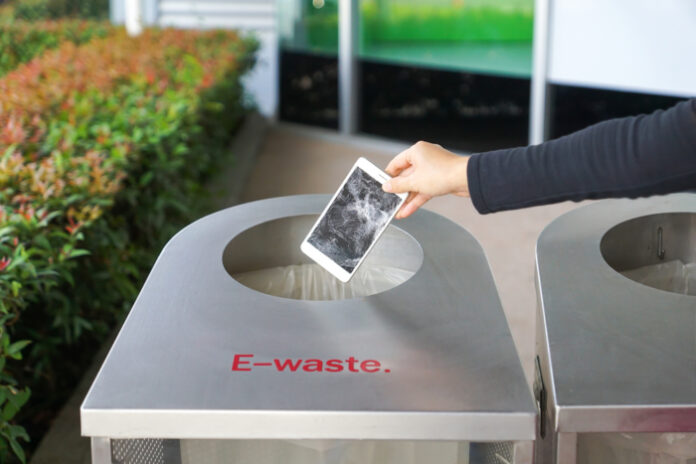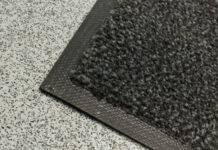The technology industry is still expanding dramatically, and with it grows the consumers’ interests and demands for electronic devices. Unfortunately, this leaves old, unwanted devices discarded and forgotten, thus contributing to a growing e-waste problem.
What Is E-waste?
E-waste refers to any electronic device or product that contains electronic components that are at the end of their usable life cycle and discarded. Some examples of e-waste are:
- Solar panels
- Smart TVs
- Laptops
- PCs
- Smartphones
- Refrigerators
This list is not exhaustive. With the expansion of the technology industry, many of the products we use daily have electrical components. This, of course, makes e-waste a bigger issue when these devices are improperly disposed of.
Linear Model
There is a linear model for electronic products. First, companies take whatever resources they need to produce it. Then the customer purchases it, uses it until it breaks or until there is a new model, and then tosses it.
Companies and manufacturers know the value of electronic devices and the consumers’ desire for them. Many of the electronic devices produced have short life cycles. The idea is for them to break at some point so that the consumers continue to purchase and the companies continue to profit. Brands and companies continue to produce newer models, because consumers tend to gravitate toward what is new.
Environmental Impacts
Tons of e-waste end up in landfills or are incinerated every year, and the impact it has on the environment makes it one of the fastest-growing risks.
Electronic devices contain hazardous substances, such as mercury and brominated Flame retardants. Burning them and throwing them away have many impacts.
Air
When e-waste is incinerated, harmful chemicals and pollutants are released into the air, and the particles can travel for miles and create risks for both animals and humans. Breathing in the toxins from e-waste can permanently damage the respiratory system and cause neurological damage.
Soil
E-waste contaminates soil and landfills. When disposing e-waste, heavy metals and flame retardants deep into the soil can damage its pH levels and composition. e-waste pollution remains in the soil for a long period of time and ultimately is harmful to microorganisms in both the soil and plants. This can harm animals that rely on these plants for consumption.
Water
Once the e-waste has contaminated the soil, it makes its way further into the earth and into the groundwater, which eventually connects it to pawns, rivers, streams, and lakes. This contamination makes the bodies of water toxic and acidic, which is unsafe for the surrounding plants, animals, and communities. Contaminated bodies of water can destroy complete ecosystems.
Circular Economy
One of the possible solutions for eliminating the amount of e-waste every year is by implementing a circular economy.
In a circular economy, products and materials are made to minimize resources, reduce waste, and reduce carbon emissions. The idea is to keep products in use for as long as possible, repairing, recycling, and redesigning them for repeated use. At the end of their life cycles, their materials can remain in the economy and can be reused.
For electronic devices, this can mean consumers purchase services, not the products. Electronic devices can remain the property of the manufacturers, who would be in charge of repairing, recycling, and selling the products. Because they would be solely responsible for them, manufacturers would better design their products to last longer and be easier to recycle so that they could reuse those materials. In turn, this can help them save money. Essentially, we would start seeing electronic devices with longer life cycles and less e-waste in landfills.
Steps
A circular economy would be a huge step in solving the country’s e-waste problem, but implementing this kind of economy could take years. It involves many policy changes in businesses and alterations and manufacturing. However, until then, the presence of e-waste is still an issue. To lessen e-waste now, there are steps consumers can begin taking to help alleviate the problem.
Proper Recycling
Electronic devices contain valuable metals, like gold, copper, and silver, which are reusable precious resources. Unfortunately, only about 20% of e-waste properly recycles. Thus, these resources are dumped and burned every year.
When we mine the earth’s crust for fresh resources, we generate more CO2 emissions, which contribute to our Environmental issues. Harvesting these resources from e-waste instead of the earth is a way to generate fewer emissions. In addition, these resources help in creating new products.
Many communities have e-waste collection days, in which customers drop off electronics at collection centers. This keeps the electronics out of landfills and ensures their reuse.
Buying or Selling
If consumers are looking to make profit from their old electronic devices, there is always the option of reselling them. Not only can electronic devices be sold to local consignment stores, through yard sales, and at Pawn shops, but there are also places online that will buy your phone and other electronic devices.
When consumers look to upgrade their devices, the chances are that someone else is offering a used version of that device. Instead of going to the store outright and purchasing it, consumers can buy used electronic devices. This extends the products’ life cycles and keeps them out of landfills.
Final Thoughts
Ultimately, e-waste is going to be a problem for years. However, there are possible solutions and things we can start doing today to limit this waste.
Find a Home-Based Business to Start-Up >>> Hundreds of Business Listings.















































